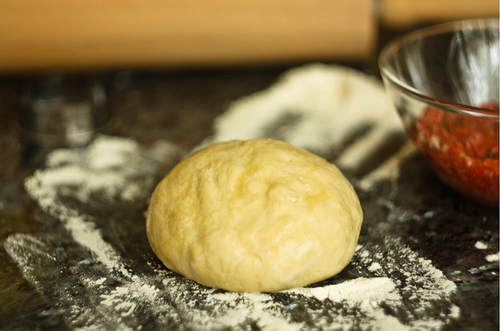The most important and unique quality of pelmeni dough, which sets it apart from other popular Eastern European dumplings such as vareniki and pierogi, is the thickness of the dough shell. Pelmeni are made using either all-purpose of wheat flour in addition to eggs, water, and salt. In order to make the dough, the cook is instructed to place the flour on the counter and create a small well in which you add the water, flour, and salt before combining. Others just instruct to combine the ingredients in a bowl. Pelmeni dough is unleavened, should be made as thin as possible, and should have a high proportion of filling to dough (“Pelmeni”). Getting the dough to the right consistency requires that it be kneaded until elastic and no longer sticky. Many recipes suggest that the dough should rest 30 minutes before using. The dough, when rolled out, should be no thicker than a knife blade (Culinaria 133). The thinness of the dough makes the dumplings delicate and allows the meat inside to cook quickly (Wilson).

